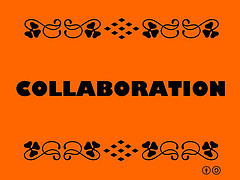Entrepreneurs: Lessons From Founder Showcase
Thursday, May 14th, 2015
Today I attended The Founder Showcase.
There are a tremendous number of companies looking for access in the space of early ventures. It is hard to compete against all the din.
This year’s Founder Showcase included a few dozen interesting companies at the booths. So it is not strange how even a very sophisticated and advanced companies can get overlooked.
So, what do venture capitalists look for?
Each level of the selection process for a startup is brutal in its selectivity and uses a different filter. The filter applied at the Founder Showcase was one of popularity. This induces biases that businesses and investors wouldn’t have.
One start-up, Quarrio, was the only company using AI to solve a hard problem – one of making data in tables accessible using plain English. It is a usable and complete product relative to others at the showcase. It was filtered out of the pitch competition.
The pitch competition included a selected few companies:
- Makerblok: Making educational electronics for children.
- Ampl: A bag that can charge all your devices so that you don’t have to worry about charging each device. Is cool but is too heavy.
- Theo: MLS quality data (much more accurate in price compared to Redfin). Also there is an argument that there are many features/amenities that Real Estate agents desire.
- keepe: This is a startup based in Seattle offering handyman services guaranteed in 1 hour.
- Trato: This company serves up customizable legal documents to make it easier for the masses to do business.
The members of the VC panel are listed here.
On the Problem: VCs generally want to know how much pain is there in the problem. Who faces the pain and how much the solution removes the pain. How big the market is.
Solution: They need to know how the startup solves the problem. How credible the solution is. If there is a technical moat around the solution. Sometimes the moat is market share. If so the biggest advantage is swift execution.
Scaleability: Building connections one at a time is hard. There has to be a plan to reach people quickly. There is a lot of noise around. There should be a plan to get the business past the noise.
Capital intensity: The question here is how much money needs to be invested in the solution before it starts cash flowing. High capital requirements increase the risk.
Team: Investors look for teams when investing. Teams increase stability and credibility. A team with a background in their field of expertise is more likely to create a moat of competence. Similarly a team that has worked together for a long time is likely to work well.
Generosity: Kickstarter is another example of a generous startup that has succeeded by making many other people succeed.
A life-sciences called Suntowater was voted the best in this Founder Showcase event overwhelmingly by both the crowd and the judges. It solves the problem of clean drinking water from the humidity in the air using electricity generated by a solar panel. This innovation is considered generous because it is most useful to the underdeveloped world.
The general recipe for a successful startup is to relate to people, then promise a great future and connect the dots.
Chamath Palihapitiya, Founder of The Social+Capital Partnership, had great insights to share about the makeup of a wildly successful startup in the future. One source of information is the trend in the tastemaker in society.
In an earlier era individuals and companies paid a lot to get attention from consumers through selection by the tastemaker: companies such as AOL who rented their landing page for millions or radio stations that chose the music to be played.
Now the mechanism of taste selection has become “likes” on Facebook where everyone has a say. The downside of this mechanism is the noise. Facebook is likely to face creative destruction as the pendulum swings.
Chamath thinks that the next generation of companies will have multiple lightly curated channels either selected by humans or by algorithms. An example is Patrion, where people support the art they like, similar to Italy during the Renaissance.
Fixing education is an interesting problem. Linda frames education as a way of learning skills. This is more enlightened than the idea of education for its own sake. Startups that solve a problem can expect better reception.
In the past software giants like Microsoft and Oracle were dominant.
There has been a shift towards SaaS.
The next shift is expected to be towards outcomes as a service such as Uber.
For the investors, Warren Buffets letter to shareholders says that he sat on money for over 1/3rd of the time.
Chamath expects a funding hiccup in 2-3 years. Many companies are raising a lot of money in the current bubble. The easy money has to end at some point.
Companies that don’t have a sufficiently good product to market fit will suffer. But it’s mostly their employees who have given up pay to get stock options who will lose big.
Chamath’s advice to entrepreneurs is to raise money when the going is good and sit on it till the company figures out a good product to market fit.
Did you know that Peter Diamandis didn’t have 10M$ when he announced the 10M$ prize? Nobody asked about the money since he cleared the line of credibility. He had astronauts and the NASA chairman beside him when he made the announcement. Strangely, the winning team spent about 30M$ to earn the prize.
So, where did the money come from?
Peter approached about 150 people who declined to fund the prize. That is a lot of rejection!
Richard Branson declined to fund twice. After a lot of insecure moments, they found that there is insurance against unlikely events that could cover this event.
A private company going to space was considered unlikely, so he was offered a $3M premium to insure against the outcome. He negotiated it down to a 50k/month premium. Then it was a question of finding people who would support the bet on a monthly basis. This spreads the pain out, but it lasted for ever.
Richard Branson marched in weeks before the prize was won with an offer of $250m to commercialize the winning tech so that he could have his picture taken with the winners.
… and that is how Venture Capital works.
Image credit: Alpha Sangha






 Back in the early 1980s when there were no cellphones, no email, no WWW and Apple was the hot young company with the great perks a friend of mine interviewed with them.
Back in the early 1980s when there were no cellphones, no email, no WWW and Apple was the hot young company with the great perks a friend of mine interviewed with them. Years ago, Neil Senturia, CEO of Black Bird Ventures posted his thoughts about CEOs, hiring and culture.
Years ago, Neil Senturia, CEO of Black Bird Ventures posted his thoughts about CEOs, hiring and culture.

